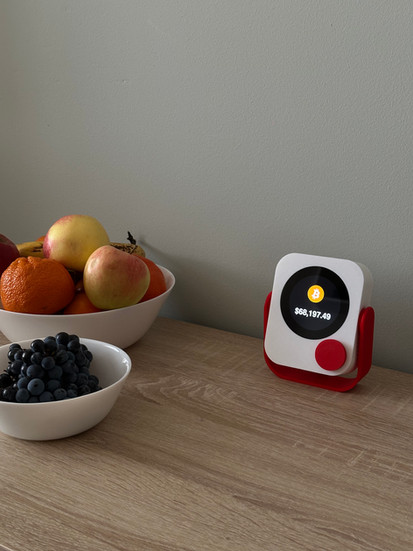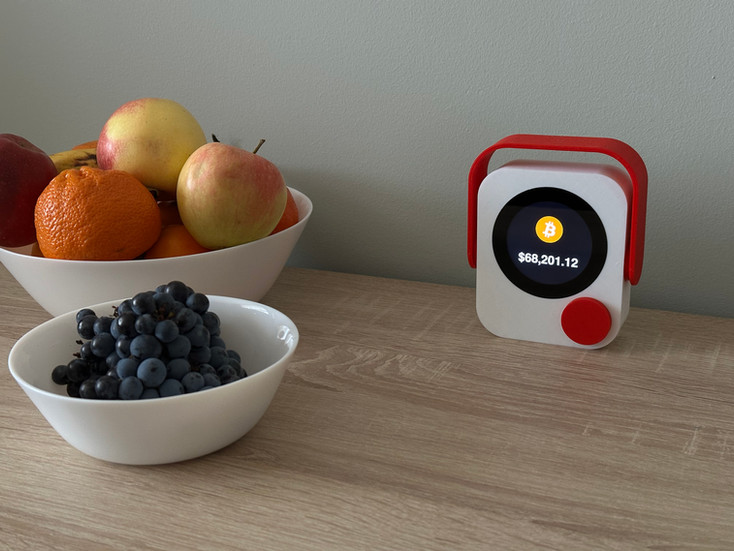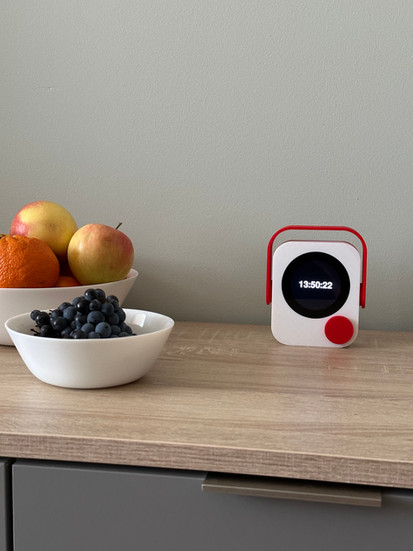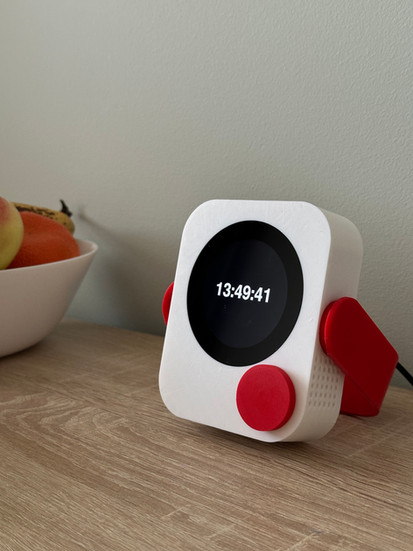#8 - What happened to MoonClock v2?
- pavol67
- Jan 11
- 3 min read
Updated: Jan 12
You may have seen that MoonClock v2 is coming soon. Or is it? It’s been a while. Let me explain what’s been holding things up. MoonClock v2: The Beginning
Development for MoonClock v2 began back in 2023. The plan was for it to resemble the original v1 design but with some notable upgrades: colorful displays, a slightly larger 1mm aluminum case with a space gray finish, and a Raspberry Pi Compute Module 4 paired with a 1TB NVMe for hosting a Bitcoin (BTC) node.
A prototype was manufactured, but we ran into issues with the NVMe. After some time, I decided to scrap it and start over from scratch.
MoonClock "v3"
For the next iteration, I explored various display options. Nothing really matched my vision until I came across the “T-Display S3 Long.” Its colorful, touch-enabled, widescreen design was perfect for displaying crypto prices. I created a 3D-printed prototype, which I liked enough to move forward with.
The next step was making a proper case. The first aluminum case I ordered arrived damaged and felt cheap because it was too lightweight. I redesigned it slightly and had it made from bead-blasted stainless steel instead. The result was fantastic—solid and premium-feeling. While I wasn’t completely sold on the side-mounted screws (“ears”), they didn’t pose a major issue.
The bigger problem came from the display. Due to memory limitations, the interface was laggy and essentially unusable. You can see the issue in the video below. Because of this, I had to abandon the idea.
MoonClock "v4"
Back to the drawing board once again. The idea of including a BTC node had been abandoned in the “v3” prototype, but I kept thinking it could work if done right. Some might argue, “Regular people will never run their own BTC nodes.” That might be true, but if you provide a compelling reason and make it appealing and easy to use, they just might. This would help decentralize the Bitcoin network. Instead of buying a node outright, the idea was to bundle the node as a bonus feature of the crypto ticker.
Around this time, I came across a YouTube video by Scott Yu-Jan about his popular 3D-printed iPhone stand. In the video, he referenced a book on legendary German industrial designer Dieter Rams, whose minimalist designs inspired him. I explored Dieter Rams’ work myself and was struck by the aesthetic simplicity of his products. Inspired by his philosophy, I designed the MoonClock “v4” prototype—and I love it. It’s compact, clean, and really cute. This version runs on a Raspberry Pi 5 (8GB) with a 1TB NVMe for the BTC node, a 2.1” HyperPixel round display, and a red button-potentiometer for controls. However, this prototype also has its challenges. The display works on the Raspberry Pi 5, but the touch functionality does not. That’s a bit of a letdown, but I’m considering releasing it without touch support, making the red wheel the primary control. Honestly, this fits the retro vibe of the device quite well.
Since the project is open source, anyone who wants to add touch functionality later would be free to contribute and share it with the world.
I’m also considering different materials. While this prototype is 3D-printed, an aluminum version could be interesting as well.
The Hardest Part: The BTC Node
The BTC node itself runs well and synced in 2–3 days, which is reasonable. The real challenge lies in creating an easy-to-use interface so people can manage it effortlessly.
The BTC node isn’t too difficult to work with, but things get complicated with the Lightning Network and channel management. The Lightning Network is… let’s just say, it's devil's revenge on humanity. Using a non/custodial Lightning wallet and hoping transactions go through is one thing, but managing the backend is a whole different nightmare. Granted, I’m not the best coder, but still—it’s a headache. This part needs a lot of work. What do you think? Let us know below ↓
Which design do you like more?
MoonClock "v3"
MoonClock "v4"













































I love Your ideas Pavol. Moonclock V1 is beuautiful piece of Your BTC work. V3 with aluminium/steel design is amazing. V4 too. Need to have one of this. Represents the power and uniqueness of Bitcoin. If You need support for Your ideas, write to me. Believe in Bitcoin!
Hi! Would it be possible to add an option to enter the current amount of purchased BTC in a text file, and then it would show its value in dollars? Thanks for your reply. Rob.
Moonclock v1 design asethetic is the nicest in my opinion- simple, elegant and stylish.
Hi! Thanks for the post. V4 is open source? Where can I find it?